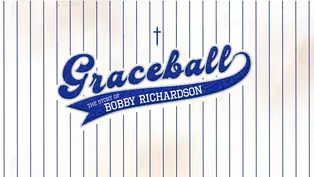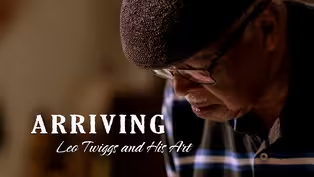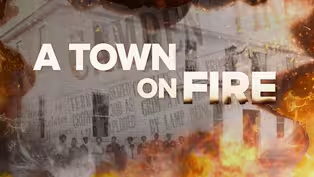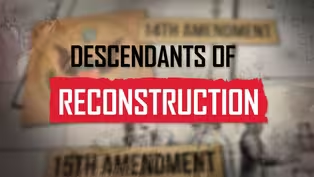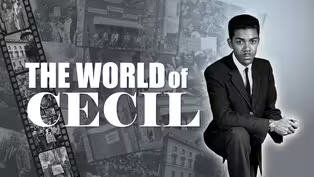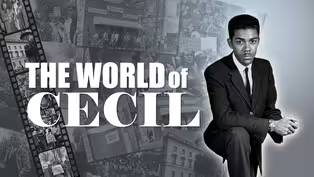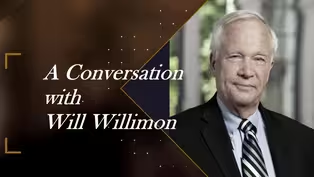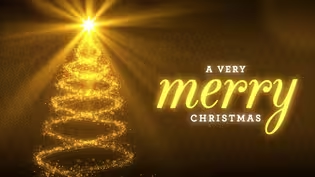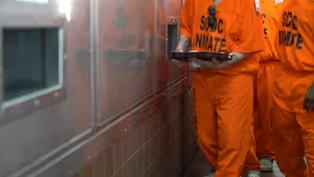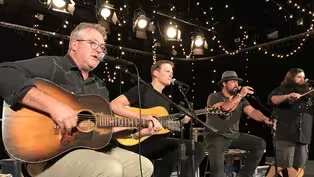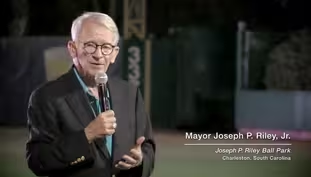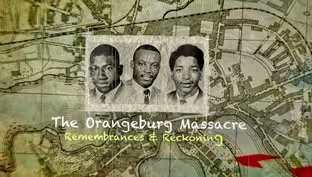
SC On Display: The Murals of Rock Hill
Special | 26m 46sVideo has Closed Captions
"'The Murals of Rock Hill'' spotlights this vibrant art community.
SC On Display: The Murals of Rock Hill showcases several large-scale murals that adorn downtown Rock Hill, turning the city into a vibrant canvas of history, resilience and imagination. Through visuals partly captured by a drone, the documentary takes viewers on a guided tour of Rock Hill’s artistic landmarks while offering insight into the stories behind the paint.
Problems playing video? | Closed Captioning Feedback
Problems playing video? | Closed Captioning Feedback
SCETV Specials is a local public television program presented by SCETV
Support for this program is provided by The ETV Endowment of South Carolina. Additional funding provided by Dick and Jan Shaw McCoy.

SC On Display: The Murals of Rock Hill
Special | 26m 46sVideo has Closed Captions
SC On Display: The Murals of Rock Hill showcases several large-scale murals that adorn downtown Rock Hill, turning the city into a vibrant canvas of history, resilience and imagination. Through visuals partly captured by a drone, the documentary takes viewers on a guided tour of Rock Hill’s artistic landmarks while offering insight into the stories behind the paint.
Problems playing video? | Closed Captioning Feedback
How to Watch SCETV Specials
SCETV Specials is available to stream on pbs.org and the free PBS App, available on iPhone, Apple TV, Android TV, Android smartphones, Amazon Fire TV, Amazon Fire Tablet, Roku, Samsung Smart TV, and Vizio.
More from This Collection
Graceball: The Story of Bobby Richardson
Video has Closed Captions
At nineteen years-old, Bobby Richardson, became the starting second baseman for the Yankees. (54m 51s)
Arriving: Leo Twiggs and His Art
Video has Closed Captions
Dr. Leo Twiggs is an artist and educator in South Carolina. (56m 46s)
Video has Closed Captions
The Cleveland School fire of 1923 influenced building and fire codes nationwide. (56m 46s)
Video has Closed Captions
Explore the relationship between Reconstruction and African American Life. (56m 46s)
Video has Closed Captions
Part two continues the examination of the life of Cecil Williams. (56m 46s)
Video has Closed Captions
Explore the life of acclaimed civil rights photographer, Cecil J. Williams. (57m)
A Conversation With Will Willimon
Video has Closed Captions
William Willimon is an American theologian and bishop in the United Methodist Church. (27m 46s)
Carolina Country with Patrick Davis & Friends
Video has Closed Captions
Carolina Country with Patrick Davis & Friends. (58m 39s)
The Orangeburg Massacre: Remembrances and Reckoning
Video has Closed Captions
The Orangeburg Massacre: Remembrances and Reckoning. (56m 46s)
Providing Support for PBS.org
Learn Moreabout PBS online sponsorshipBrittany Kelly> I think it's a feeling you get here when you're in Rock Hill.
I always hear it that people are like, "Gahhh, This is just so great.
It's such a small, cute little town with so much culture and history."
And that's exactly...
I think that's our murals speaking to people.
Bunny Gregory> The public art scene in Rock Hill, it's pretty dope.
It's a lot going on.
I had no idea.
Gregory Winters> It's free art in a way.
It gives you a little bit of cheer when you pass it.
Sydney Duarte> No matter who you are, no matter what time of day it is you're going to encounter, these pieces.
And it really transforms an area in ways that many people don't expect.
♪ David Platts> It evokes an emotion or evokes a conversation, even if it is, oh, I don't like that.
Well, why?
Dee Dee Payne> I think the murals are just lovely.
I like the fact that they show a great deal of pride.
I find them to be very inclusive.
Jonathan Nazeer> When we have opportunities to, have art and expression in our community that shares our stories.
You know, it's a very powerful being.
Eduardo Venegas> I think Rock Hill has realized the importance of quality of life and what art means in quality of life.
Myloan Dinh> Rock Hill is an amazing example for other cities and towns all across the country that this is possible.
Caroline Rust> We could look back at all of these works and imagine what was going on in our society at that time.
What were we thinking?
What were we feeling?
What were we attempting to express?
♪ ♪ Narrator> Funding for this program, generously provided by the ETV Endowment of South Carolina, supporting South Carolina stories through the generosity of donors and members since 1977.
♪ Additional funding provided by Dick and Jan Shaw McCoy.
♪ ♪ ♪ John Gettys> The murals of Rock Hill really are a testament to the people of Rock Hill.
You see a lot of individuality in these murals.
You see a lot of passion about what we could be as a community or as people, but when you scratch below the surface a little bit, you recognize it, but for the people of Rock Hill and what they wanted to contribute, you wouldn't have any of this.
About a decade or so ago, our city council at the time, our mayor at the time, decided it made a lot more sense for us to pull in development into the center city, rather than seeing commuters come and staying at a apartment complex off of 77 and really never getting solidified into the fabric of life of our community.
Melanie Cooper> We had been working, the Arts Council, had been working with the community for a very long time, impressing upon them the importance of making sure that art was part of redevelopment efforts, that it was part of, of just development efforts, in general.
Allan M. Miller> In 2015, on Main Street, there was a project where they tore down one of the old buildings, the old Woolworth Building.
And as they rebuilt with an apartment building, they decided they needed to have an alleyway from the parking lot to Main Street.
And that's where the idea came up to make it into something more than just a common alley, make it attractive.
And that's where the idea came up to put a mural up.
And then the Rock Hill Economic Development Corporation, seeing the success of the Freedom Walk, we decided that they would evolve into a placemaking committee.
Melanie> The Placemaking Committee, which is part of the Rock Hill Economic Development Corporation, sat down and intentionally began developing public art projects that would beautify, that would engage the public and would bring that work to artists.
They would, also create spaces where people would want to spend time in the downtown area longer than they would have if it wasn't here.
David Platts> I think the business community saw this as an opportunity for them really to not only, you know, make money, but also as a place to really bring up the way that people experience being in Rock Hill, wanting to, wanting to be here and then wanting to come back.
Allan> We earmarked, I think, eight different alleys or eight different areas that were coming from parking lots into Main Street or to vital, arteries within the city.
And after that, I believe the city recognized this, this would become an attraction where people would want to come to Rock Hill to see the murals.
Eduardo Venegas> So it became a community effort.
You got the government, the city of Rock Hill, Rock Hill Economic Development Corporation, Women's Arts Initiative, the community.
And that's how it started to become a thing.
Caroline Rust> I would say the collective portfolio of the murals and the public art are a shared collective vision of our community.
I think we're up to more than 20 different murals at this point, which is phenomenal.
We have murals by renowned artists like Shepard Fairey, but also really talented local and regional artists, as well.
♪ Allan> Freedom walkway mural inspired, I think, every other mural that we've had since that time.
Juan Logan from Charlotte was the gentleman who designed it, and there were a lot of parts of the mural that were original.
He implemented his artistic ideas and developed it into a tribute to the Friendship Nine.
Melanie> The Friendship Nine, the gentleman who said, "Jail, no bail", "We will go to jail for sitting at this lunch counter.
We will not pay bail."
Juan Logan> I think most importantly, it acknowledges where Rock Hill has been.
What it has gone through, what it continues to go through.
We never imagined, you see, that this whole process of striving for, in terms of achieving freedom, that we ever actually arrived there.
It's an ongoing process.
♪ Laurel Holtzapple> So the impetus of the project was the vacating of their sentences for trespassing.
And the idea of opening up the docket book, was the big idea for the walkway.
And you can see the brick is flowing.
And also the reference to the Catawba River.
And then we also have areas of the basket weave patterning, which was a reference to the tradition of the Catawba Indians.
And you can see, you know, the spider lilies and the dogwoods, on the top of the wall celebrating the native plants of Rock Hill.
Melanie> The Freedom Walkway is actually an award winning public art piece.
It also includes stools for you to sit under and reflect.
And at the backside of it, there's a courtyard.
And in that courtyard each year we honor groups or individuals who have fought for civil rights in our communities.
And those change over in the fall of each year.
So we make sure that everyone who has struggled to achieve civil rights for all has their moment to shine.
♪ Osiris Rain> Now, I was first reached out to by the city, their Arts Council.
They pitched the idea of the Mural Mile.
They wanted to create a bright and vibrant, welcoming mural that would, engage visitors to Rock Hill Spray paint is the most effective and efficient for things like this, especially when you're working with highly textured walls or surfaces that aren't the ideal.
The aerosol propulsion is brilliant for getting into all those nooks and crannies, and having a consistent finish at the end of the line.
I like to use all of the colors.
I like to do a lot of convoluted layering so that every time you view a piece, you see something new hidden in layers.
The mural is on White Street.
It's on the side of what was Dust Off Brewing, this beautiful spider lily, which is a native of the Catawba and only grows in two parts of the world.
It's a beautiful symbol to the area as the main focus, and Rock Hill is spelled out in the background.
Brittany Kelly> It was the first thing that Rock Hill was like, "Wow!"
I mean, you just you had to drive by and it brought so many people out.
♪ Osiris> I actually worked on two of Rock Hill's murals.
Beyond that one, I worked on a project on the side of the Public Library, a piece that celebrates Vernon Grant in collaboration with the artist Jill Pratzon.
Allan> Vernon Grant was an illustrator who lived in Rock Hill the latter years of his life.
Prior to that time, he was a New York illustrator, illustrator for some of the great magazines in the country that his work inspired the work of Walt Disney.
Of course, he's most famous for Snap, Crackle and Pop.
Vernon> My dad, he created Snap, Crackle and Pop in the 1930s.
It was the largest advertising campaign in history at that time.
Allan> So we were fortunate enough to hire a lady by the name of Jill Pratzon.
Jill is a New York illustrator.
She restores illustrations of many of the famous artists, and she had studied Vernon Grant and contracted her to put together a tribute to one of our favorite sons.
Osiris> I was hired to execute her vision, with this particular mural.
Unlike just a singular flat surface, we had to deal with cornering, alternating surfaces.
Jill did a brilliant job of treating these as almost individual pages in a book, tying in these individual elements in Vernon Grant's style and homages to his legacy, while also tying in things that are culturally relevant to Rock Hill, Vernon> Where after World War Two, his eyesight was not very good, so he came to Rock Hill to be a farmer.
Then he went to work at the Chamber of Commerce and Urban Renewal, and he had a lot of influence on how Rock Hill's growth took place.
I think that he would really like to, like, seeing his artwork displayed like that.
It's a very good rendition of his, his work through his life.
He'd be very proud of it.
♪ Darion Fleming> So we wanted to have an image that was very quickly identifiable and something that was going to be really uplifting.
And so we came up with the idea to use a child drawing her dreams on the wall.
And I have a really good friend here, and he has, two beautiful daughters.
One of them is S.J.
She's really cool.
And she was very down to, sit for photos and reference shots for this mural.
I did ask S.J.
what she would like on the wall, and she said something space related.
So it wasn't a drawing that she had done, but it was something that I drew just digitally.
And I drew her in the spaceship as well.
And I made a very conscious decision to, silhouette her face, because I think when kids pass by, it's, it will be easier for them to envision themselves in that position or themselves on that wall wearing that hoodie.
We wanted to make it, you know, not overly, representative Rock Hill, but just have some kind of smaller nods.
And so I took the tag off of her hoodie and, edited that digitally to say, 1852, which is when Rock Hill was incorporated.
And the backside of her sweater also says Rock Hill, South Carolina, just kind of cut off from the hood.
I just think it's like, it's kind of cool to just have like a not fully finished word, but you know exactly what it is.
It took 16 days to paint over the course of two and a half, three weeks.
I started with the drop shadow because that's the thing that's farthest back on the wall, and that was done with a handheld sprayer.
The rest of the image was already sketched on the wall via projector.
And so at that point it was just filling in with a roller.
And then I go in with the spray paint and do all the little details.
S.J.
has, lots of hair and, it's very, very curly, very fine.
It looks awesome, but it's such a pain to paint because you're just going in with a really small, thin line and just doing all these curly curls just everywhere.
But it's super rewarding because, like, little tiny details like that, when they're, next to really large fills, like, it makes it pop so much more off the wall.
♪ Sydney Duarte> There are so many different expressions throughout the Mural Mile, and ours was more focused in a nature space.
And our mural is called The Light of a New Dawn.
And it's meant to be as if you're just, you've just arrived to the lake and the sun is rising and you're seeing all of the creatures.
The ducks are flying, the butterflies are floating around.
Everyone is waking up for the day.
And, we chose all of the different wildlife and flora and fauna that are all throughout South Carolina, just to connect with the space and, to talk about being in this present moment, appreciating Mother Nature, pouring back into that space so that we can all have a prosperous future, and without protecting the Earth like we're all in trouble if we don't pour that love into the space.
When I'm in the flow of painting, or when I get to connect with a community member that stops by and has questions, or is very curious and or excited, or has interesting opposite feelings of like, what are you doing here?
And why?
What what's going on here?
So just having those conversations for me, that is where I feel most in flow.
Just to make those connections, and it might sound silly, but it's like energy coming from my heart through my hands to the wall.
And my intention is to put as much love as I can into those pieces.
♪ A mural brings new life and color to spaces that might otherwise go unnoticed, and hopefully takes people on adventures in ways that they might not have expected.
Even though we have a mock up, usually 99% of the time, we just make things up on the fly as we go.
We just had so much fun hearing from locals what, what made them feel most at home and connected with the space.
And that's kind of what you see throughout, throughout the piece.
♪ Allan> Perhaps the most prominent mural in the community is the Shepard Fairey.
It's a huge mural, and it's done by a gentleman who has roots here in Rock Hill.
Shepard Fairey has gone on to become one of the foremost muralists in the country, and certainly one of the greats from South Carolina.
Brittany> He's most known for his Obama Hope poster, and so people will come from all over and be like, no way, you guys got Shepard Fairey because he's officially on every continent, now.
The city had hired somebody to come and just paint the solid colors of each section first, and then he started stenciling it out.
They've got their crew out there.
They just get on that lift and start going, but he involved people from the community, in fact, some of our staff members got to get in there and help paint with it, which makes it even more special to say you've got to be a part of that history here.
The Shepard Fairey mural is a representation, I think, of Rock Hill's past, present and future.
It talks about our history in the cotton industry and textiles all the way through our freedom rides from the sit-ins like the Friendship Nine and talks about quality dissent, what that means for us.
And it's onward to the future.
Rise above.
To us, it literally was our sign for our building.
So as a business, we've gotten to reap those rewards as well as just built a sense of community around art and culture.
We're so lucky to have Shepard Fairey's artwork in and outside of our building.
They did the one inside for us in a night.
It's a play on the Zapatista women, and like the femme fatale, saving the world, saving the planet, questioning things.
And some people see his all seeing eye the Obey as you know, what, who are we obeying?
What are we obeying?
But that's his intentions is to get you to question.
So it's fun to get to have people kicked down a couple beers or a couple or a couple glasses of wine.
And break that mural apart.
But it's super special to us that it's inside and we get to call it our own.
♪ Caroline Rust> In 2022, the Women's Art Initiative began working on the project for the Corner Oasis.
And, we're excited about having a green space that also was adjacent to a wall.
So we broke it into two parts.
When we started and wrote our call for proposals, we had a theme which was to have a space that would instill a sense of inspiration, but also maybe entice our community members to take a moment to breathe.
So when the proposals come in, it's a little bit like Christmas Day or your birthday, because the exciting thing is to see what artists and designers visualize in their concepts and possibilities of the space.
>> So this mural is situated in kind of a little pocket park, so to speak.
It is the backdrop for a beautiful sculpture that's representative of a flower.
Our concept for this mural was Zen garden.
Myloan Dinh> Big magnolias and Carolina Jasmine and the birds, the Carolina wren and the native butterflies.
Bunny> We used the word reflect.
We thought that would be it's, it's a beautiful thing to think about.
Myloan Dinh> And I think that's part of what we're going to leave behind.
Reflect upon what, reflect upon in your life.
Reflect upon your surroundings around nature, what's happening in the world.
Reflect about, you know, your own impact on the world around you.
It's a great question to just kind of put out there for folks to just ponder and, we hope that people will.
♪ Allan> After nearly ten years, it's certainly enlightening, and it's certainly encouraging to see how many individuals and how many organizations have stepped up and tried to be a part of this mural now, and some have done it very successfully.
One in mind is Alex DeLarge and the beautiful mural that he has out on Cherry Road that has depicts Latino figures of history and art.
♪ Jennifer Garcia> There are five individual portraits of Mexican iconic figures, and essentially they are very influential in the Mexican community.
They're all from what we call Mexico's golden age.
This was 100% funded by our family, so that the community that is around us will know that we're here and where we're represented.
You know, being the fact that we are so far from home, that's why it's been so important to us for it to be here.
And it means a lot to us that it was developed, and it was done by a Mexican American artist.
♪ When I see people come and enjoy it and take photos, it shows me all of the positive effects that the art has on the community.
♪ Allan> Other murals in the community on the south side of Rock Hill include the mural on the side of the Farmacy.
That's that's a great one that pays tribute to Booker T Washington.
Jonathan Nazeer> We wanted to come up with something that really kind of expressed the struggles, but also the resilience of black and brown people, specifically the African-American people.
So, Periwinkle Institute has been working very hard to find abandoned graveyards across the United States, and many of these were marked by periwinkle.
When enslaved ancestors were actually buried, they couldn't put up headstones and so you can find a lot of abandoned enslaved cemeteries through periwinkle.
And so we wanted to try to find a way to honor that, but also honor the folks of this community and their resilience that they will never be forgotten.
And so that was kind of the concept behind the periwinkle and of course, us being involved in agriculture.
We would be remised if we didn't honor the father of Black agriculture, which is Booker T. Washington.
And so, we wanted to make sure that we had that image there.
And one of his, famous quotes.
We've gotten a lot of attention from the mural.
I think people were just excited to see the mural project move outside of Old Town.
And so a good way of kind of connecting back all of the communities of Rock Hill, back to the center point.
♪ Kahled Shaibi> I was, inspired by the murals at the downtown, and I wanted to have my own.
We wanted something positive or something to represent everyone.
It's a magnolia tree, and it has kids that are trying to explore the entire tree.
The main point of it is about adventure and exploring a place.
And I think that's the main thing.
We wanted people to explore the city and the downtown of Rock Hill.
♪ Caroline> There's some color on this wall, an image on this wall or even on this street is really, it's helping us, isn't it?
It's enhancing where we live.
You're getting some expression out and communicating something about the community, about the place, the space that, you know, it must really need to be said.
Allan> We have a lot of history here, and it's a great way to showcase all of this.
Put it on the side of the building telling people who we are, what we are and what we believe in, and I love the way it brings people together.
Our community is better for the murals that tell the story of Rock Hill.
Eduardo> You know, we have an initiative this Rock Hill for all.
And I think the mural shows that I think is a reflection to the diversity of the city and how we're growing.
♪ Gregory Winters> It adds a layer of new on the old, and it makes you feel like people care enough to beautify it.
Melanie> We feel very lucky that we've had so many different businesses.
The public supports and, the artists support.
We're just lucky that everybody is very interested in continuing to do this and installing these intentional pieces that do drive people to come to the downtown area of Rock Hill.
Brittany> It means the world that without having to really significantly change our buildings and the landscape and all these things, we've brought so much, color and conversation and just walkability about.
And people are walking down alleys they never saw before because they're going to see some amazing murals and artwork.
It's, it's special that our city cares enough that art matters.
Darion> I just hope that it's changed a lot of people's mindsets and, thoughts on art.
And I think that it certainly has, because we're seeing just a massive growth of public art, both in Rock Hill and in Charlotte.
Sydney> It's like a wave.
You're riding a wave, and it's causing this beautiful ripple effect for everyone around, not just the businesses, but the community, visitors to the community.
Osiris> What Rock Hill is doing, I think in a goal to make a more livable space, I think that they've nailed the esthetic on the head.
David> That's what public art does.
It invokes a conversation that brings people together to talk about it.
So it's not just an exclusive experience.
It's a very inclusive experience.
It may be something that you love.
It may inspire you.
It may make you want to go home and create art.
♪ Dee Dee Payne> I think they show a great deal of thoughtfulness as far as the community is concerned, and I think they're very thought provoking.
Mayor Gettys> I hope what people will take when they leave is recognition that somebody didn't drop 2 or $3 million on our city to go do murals.
People stepped forward and said, I have this idea, I have this passion.
Will you work with me to see that happen?
There wasn't a uniform plan, so to speak.
It wasn't a uniform funding source.
And what you see isn't a story that money bought.
It was the story that people created and that I think is the real beauty of our community.
That's the spirit of Rock Hill.
♪ ♪ ♪ ♪ Narrator> Funding for this program, generously provided by the ETV Endowment of South Carolina, supporting South Carolina stories through the generosity of donors and members since 1977.
♪ Additional funding provided by Dick and Jan Shaw McCoy.
♪
Support for PBS provided by:
SCETV Specials is a local public television program presented by SCETV
Support for this program is provided by The ETV Endowment of South Carolina. Additional funding provided by Dick and Jan Shaw McCoy.
